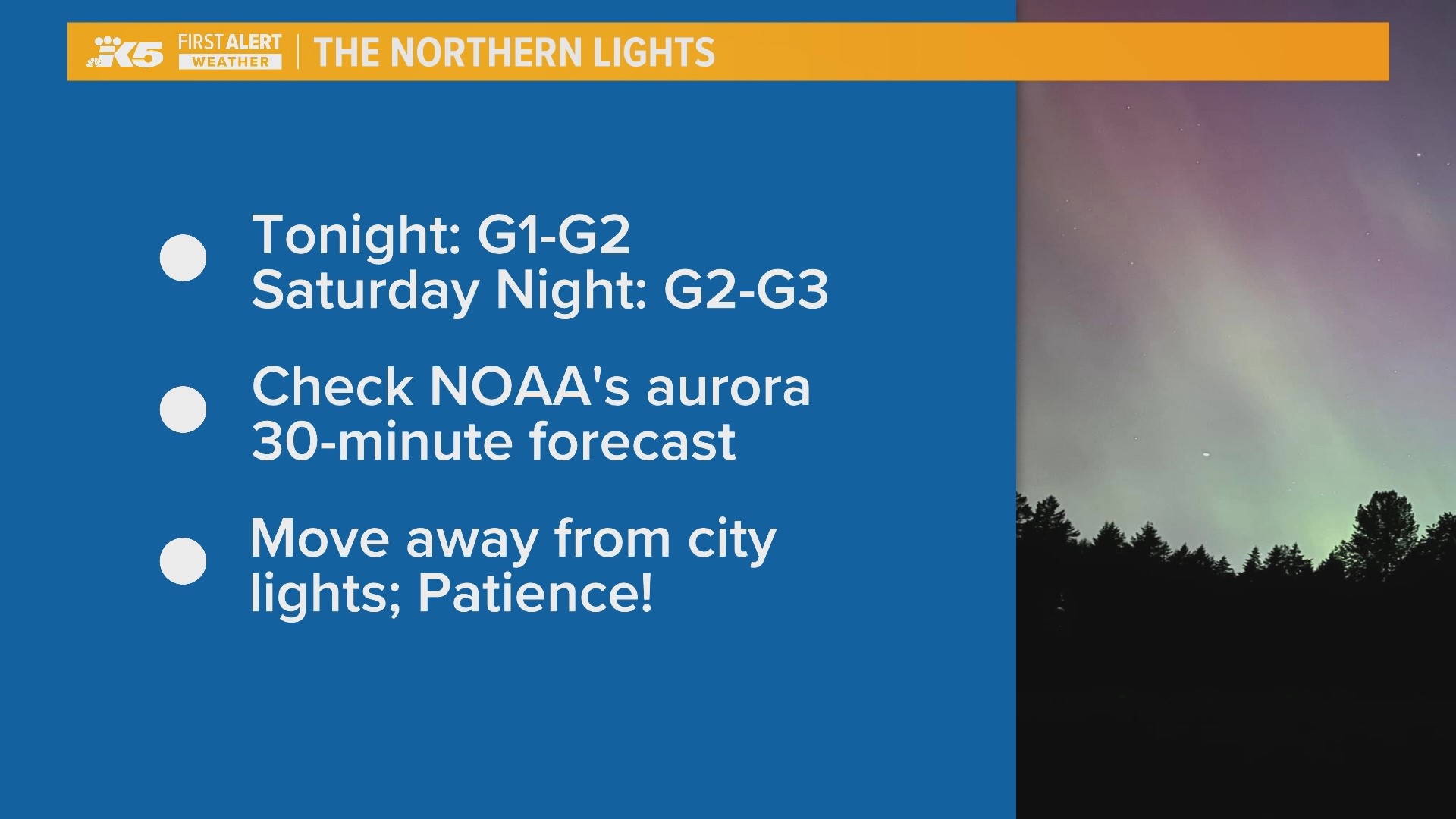SEATTLE — There is a potential to see the northern lights over Washington state this weekend due to two forecasted geomagnetic storms.
Geomagnetic storms happen when solar wind and material collide with the Earth's atmosphere. This collision is what creates the northern lights. The storms carry electrically charged particles that collide with the Earth's magnetosphere and glow different colors when they shed energy, according to NASA's Jet Propulsion Lab.
Geomagnetic storms are measured on a scale from G1 to G5, with 5 being the strongest. Friday night's storm is forecasted to register as a G1 on the scale, with a G3, a strong storm, predicted for Saturday night.
This weekend's storms will not rise to the level of the G5 storm in May, which offered an aurora borealis viewing opportunity as far south as Oklahoma and also in areas where it is typically not visible due to light pollution.
Weather conditions will be more favorable on Saturday for potential aurora borealis viewing. Conditions will be partly cloudy on Friday night, but a high-pressure system building into the region on Saturday is expected to help clear the skies that night and into Sunday, according to KING 5 Meteorologist Ashley Ruiz.
The moon will also be cooperating for northern lights viewing. It is in its waxing crescent phase, with only 3% of its nearside surface (the side visible to Earth) illuminated by the sun. This means there will be less light pollution to contend with this weekend. People will still have a better opportunity to see the northern lights if they get away from city centers and more populated areas.
The type of storm that will create the potential for the aurora borealis this weekend is called a Coronal Mass Ejection (CME) - a type of geomagnetic storm that sends solar material off into space, carrying a strong localized magnetic field with it. The two storms that are expected to collide with Earth's atmosphere on Friday and Saturday left the sun late on Oct. 1 and at around midnight on Oct. 3.
The Space Weather Prediction Center has a 30-minute forecast that predicts the location and intensity of the aurora borealis on a shorter-term scale. This represents the time it takes for solar wind to travel from the nearest observation point to Earth's atmosphere. The map is a good tool for those hoping to see the aurora borealis this weekend.

